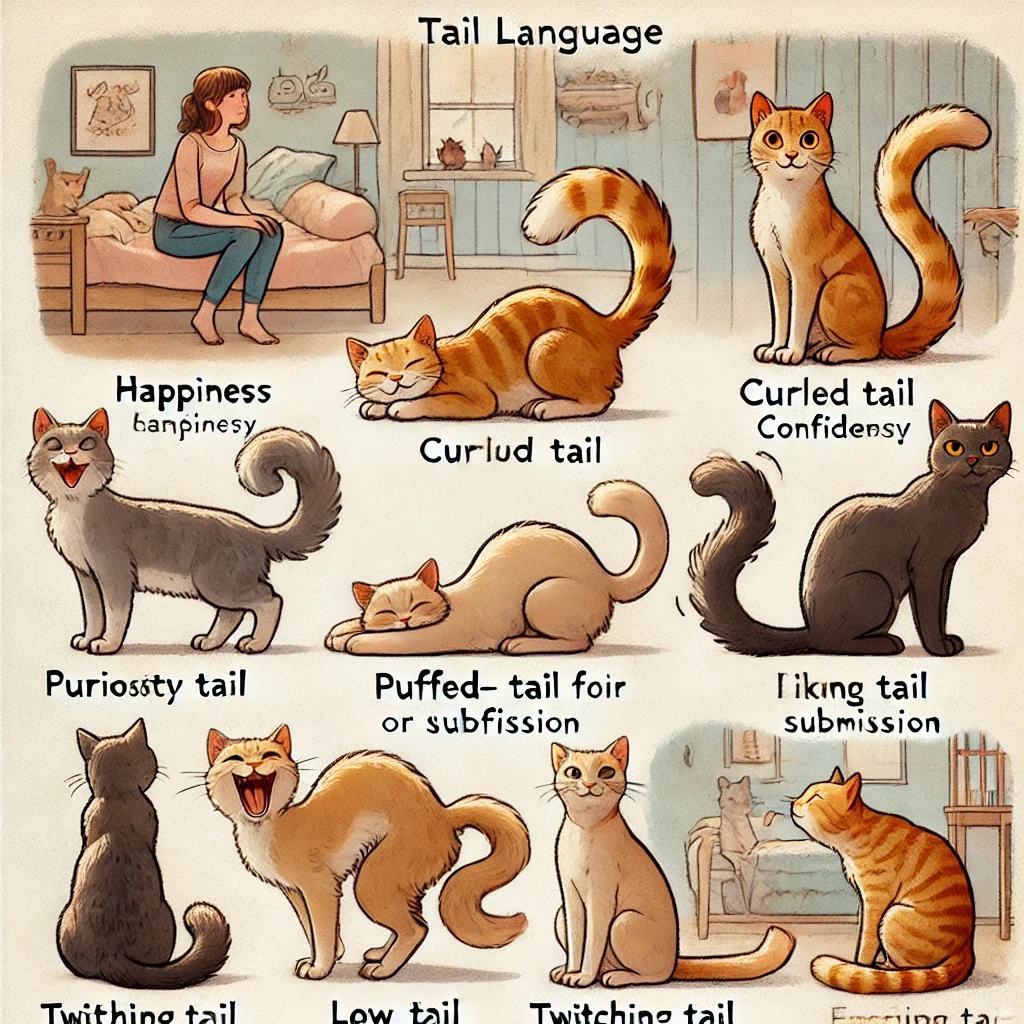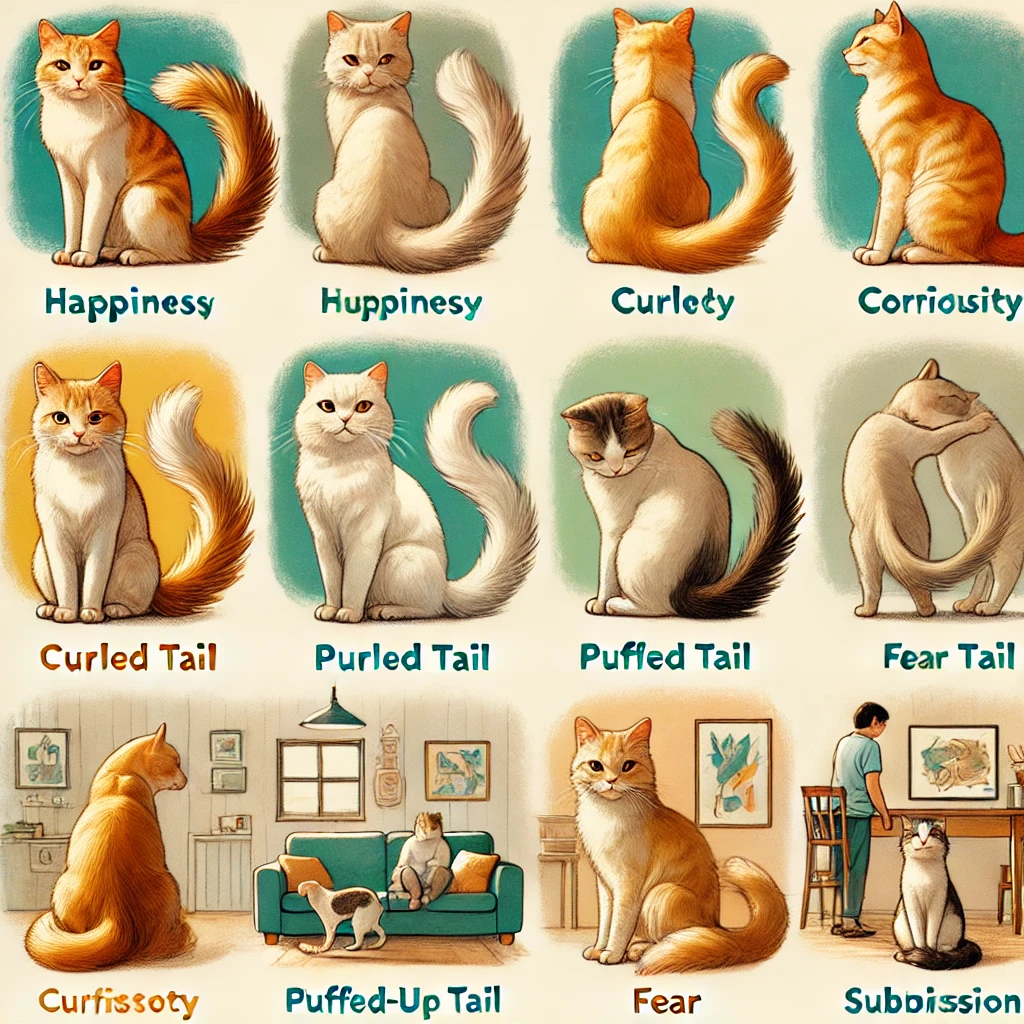Cat tail language is an essential aspect of feline communication that can reveal much about your cat’s emotions. While meows and purrs may indicate specific needs or desires, a cat’s tail often serves as a more reliable indicator of their mood. By learning to interpret cat tail language, you can strengthen your bond with your feline companion and better respond to their emotional needs. This guide will explore the various tail positions and movements, helping you understand your cat more deeply.
The Significance of Cat Tail Language
Cats primarily rely on body language to convey their feelings, with their tails playing a significant role in this expression. Vocalizations such as purring or hissing can provide some insights, but observing a cat’s tail movements offers a clearer understanding of their emotional state. Whether your cat is feeling secure, curious, or anxious, tail signals can help you create a more harmonious environment for them(The Library of Congress)(

Common Tail Positions and Their Meanings
Upright Tail
- Meaning: A sign of happiness and confidence.
- Description: When a cat approaches with their tail held high, it signals they feel friendly, confident, and eager to engage. This position often indicates trust and affection. Cats commonly greet one another with upright tails as a sign of positive interaction.
Curled Tail
- Meaning: Curiosity and playfulness.
- Description: A tail that curls into a question-mark shape suggests your cat feels playful and curious. This posture indicates that your cat is in a good mood and open to interaction, making it an excellent time to engage them in play.
Puffed-Up Tail
- Meaning: Fear or agitation.
- Description: When a cat fluffs up their tail, it means they are frightened or threatened. The cat is trying to appear larger and more intimidating by puffing up their tail. In such situations, it’s best to give them space until they calm down, as they may act defensively.
Low or Drooping Tail
- Meaning: Fear or submission.
- Description: A low or drooping tail is usually a sign of fear, anxiety, or submission. This posture can occur in unfamiliar environments or when your cat feels threatened. Offering comfort and creating a safe environment is essential to ease their stress.
Tail Twitching or Flicking
- Meaning: Excitement or agitation.
- Description: A twitching or flicking tail often signals excitement, especially during play. However, it can also indicate annoyance. If your cat’s tail flicks while sitting calmly, they may prefer to be left alone.
Tail Wrapped Around Another Cat or Object
- Meaning: Affection and bonding.
- Description: When a cat wraps their tail around another cat, human, or object, it signifies affection and comfort. This behavior shows they feel safe and secure, making it a lovely display of bonding.
Recognizing Other Body Language
While cat tail language is crucial for understanding your pet’s emotions, it’s also important to consider the overall body language. For example, an upright tail paired with a relaxed body typically signals happiness, whereas an upright tail with tense muscles may indicate stress. Attention to the full picture will help you better interpret your cat’s behavior and mood.
Tail Language and Playtime Behavior
You’ll notice your cat’s tail moving in various ways during play. Rapid tail swishing or flicking often occurs when your cat is fully engaged in the excitement of play. However, if the tail movements become too rapid or tense, it could indicate overstimulation. Understanding cat tail language during playtime can help ensure your feline enjoys the interaction without becoming agitated.

Conclusion
Decoding cat tail language can greatly enhance your relationship with your cat. Observing their tail positions and movements, you can better understand their emotional state, whether they feel happy, curious, anxious, or stressed. Each cat is unique, and their tail language may vary based on personality and experience. However, by becoming more attuned to your cat’s tail signals, you can provide the love and care they need, creating a deeper bond and fostering a harmonious environment.